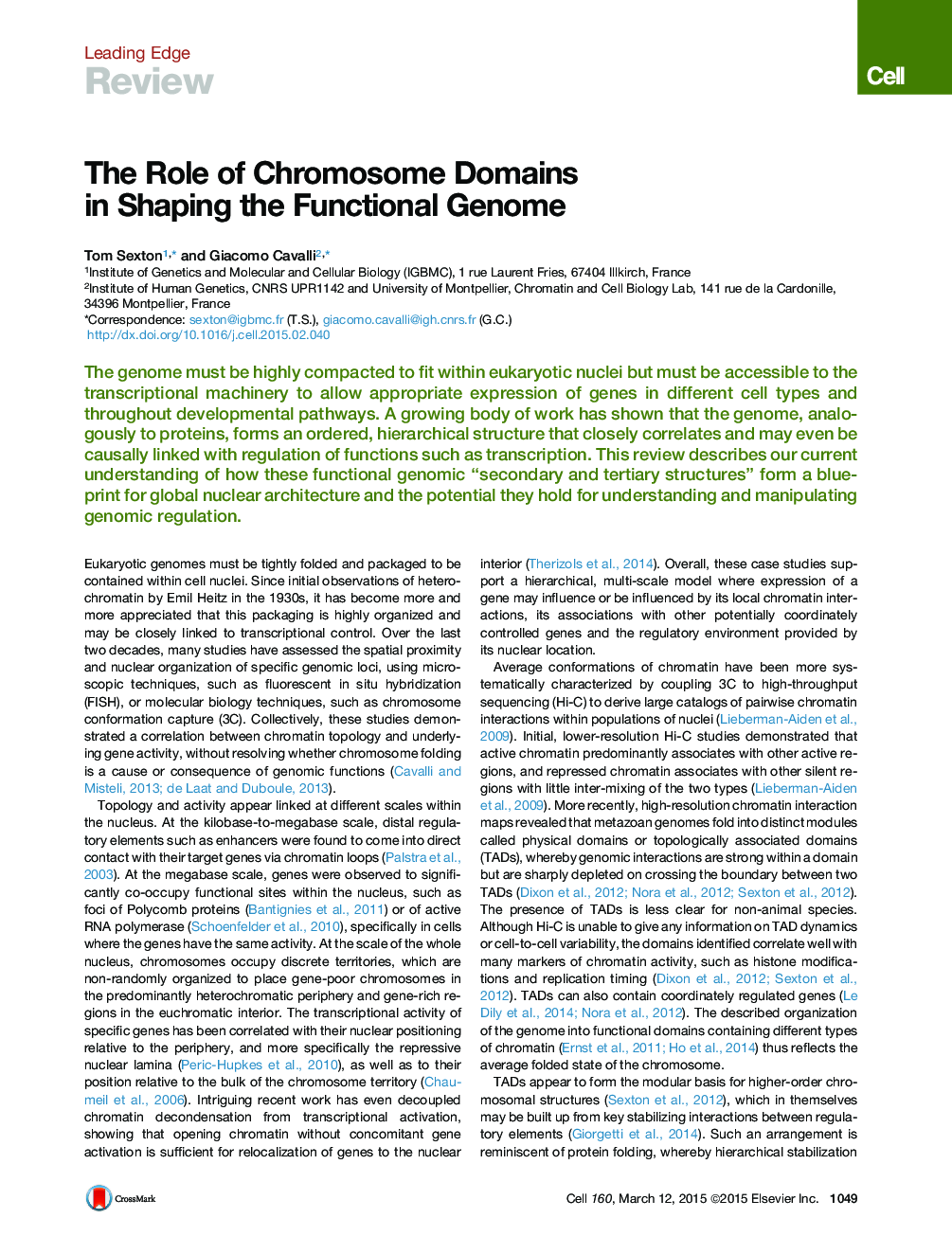| Article ID | Journal | Published Year | Pages | File Type |
|---|---|---|---|---|
| 2035339 | Cell | 2015 | 11 Pages |
Abstract
The genome must be highly compacted to fit within eukaryotic nuclei but must be accessible to the transcriptional machinery to allow appropriate expression of genes in different cell types and throughout developmental pathways. A growing body of work has shown that the genome, analogously to proteins, forms an ordered, hierarchical structure that closely correlates and may even be causally linked with regulation of functions such as transcription. This review describes our current understanding of how these functional genomic “secondary and tertiary structures” form a blueprint for global nuclear architecture and the potential they hold for understanding and manipulating genomic regulation.
Related Topics
Life Sciences
Biochemistry, Genetics and Molecular Biology
Biochemistry, Genetics and Molecular Biology (General)
Authors
Tom Sexton, Giacomo Cavalli,
